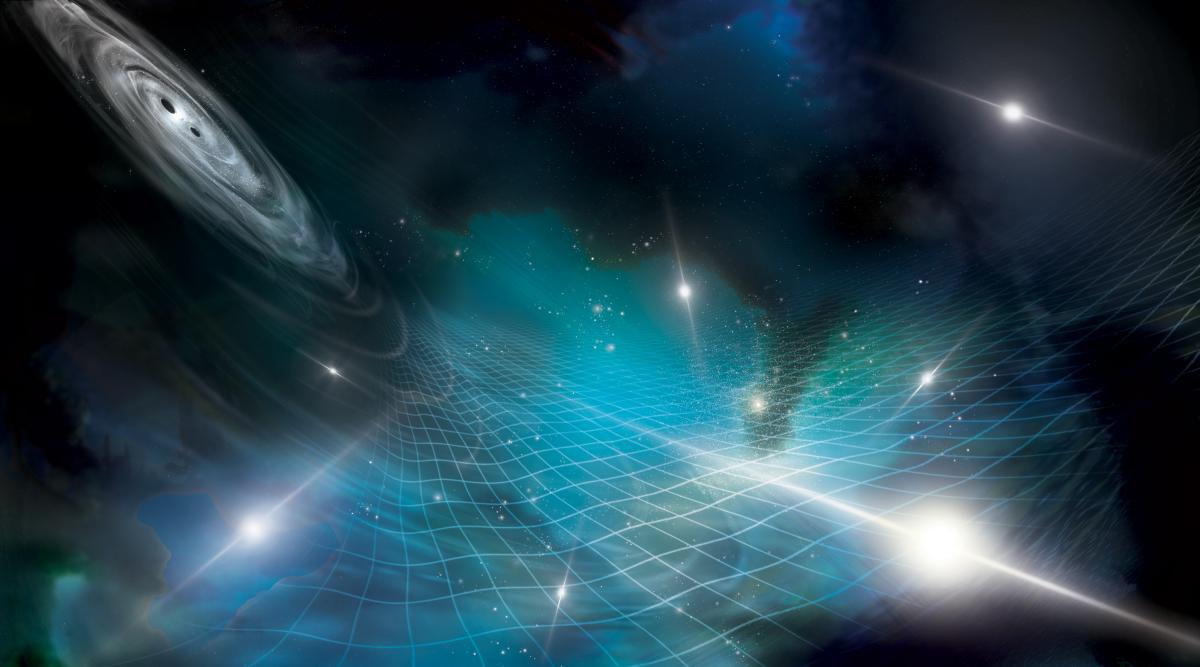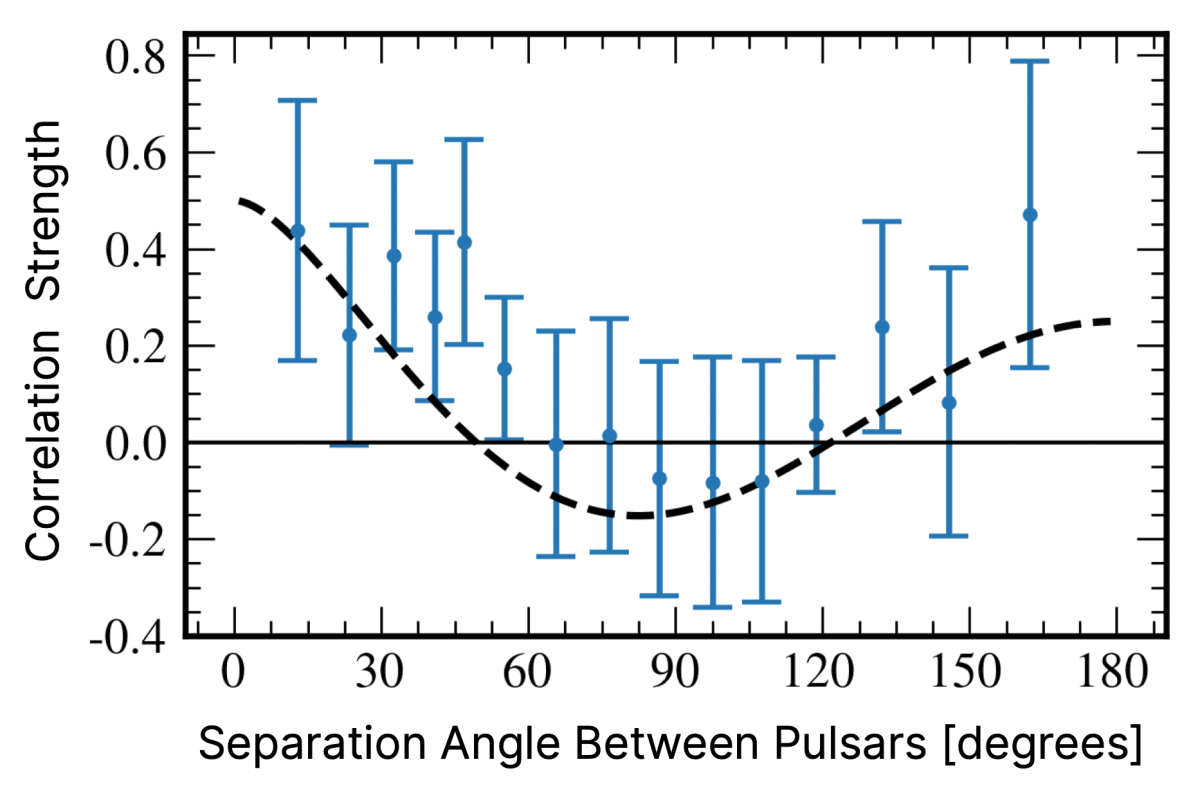
Artist’s interpretation of an array of pulsars being affected by gravitational ripples produced by a supermassive black hole binary in a distant galaxy. Credit: Aurore Simonnet for the NANOGrav Collaboration
"[...] the spectral characteristics broadly agree with expectations for a population of inspiraling supermassive black hole binaries [...] in the mass range of ~100 million to ~10 billion Solar masses."
Gravitational waves are a fundamental prediction of Einstein’s theory of general relativity, appearing as a byproduct of the dynamic nature of space-time. From their first mention in the scientific literature in 1916, nearly a full century elapsed before humans developed the technology to measure them. When the LIGO detector did measure gravitational waves, it was from the inspiral and coalescence of two black holes, each approximately thirty times as massive as the Sun. Yet there had already been signs of gravitational waves from precision timing campaigns of the Hulse-Taylor pulsar, showing that its orbit with another star was tightening due to the emission of gravitational waves. These observations aligned beautifully with general relativity. Now NANOGrav has constructed a measuring technique that employs pulsars to find gravitational waves from all over the Universe.

Einstein’s theory of general relativity predicts that a background of gravitational waves should imprint a distinctive pattern of correlated timing variations on pulsars, indicated by the black dashed line. By binning and averaging the correlation measurements of all our pulsar pairs, NANOGrav finds the points in blue with uncertainties shown by the error bars. We now have multiple lines of evidence for a gravitational wave background, producing a pattern of correlated timing offsets that is consistent with general relativity.
By tracking exact arrival times of radio pulses from 68 pulsars in the Milky Way over 15 years, NANOGrav has found evidence for a distinctive pattern of correlated timing deviations, agreeing with the predictions of general relativity. The source of these gravitational waves is an all-sky background, rather than just one single source. NANOGrav has found that the spectral characteristics broadly agree with expectations for a population of inspiraling (but not yet coalescing) super- massive black hole binaries. These binaries are expected to be in the mass range of approximately 100 million to 10 billion Solar masses. However, the source population is still in question, and alternative cosmological hypotheses have been explored.
The correlations between pulsars are key to identifying the signal as being produced by gravitational waves. Both Bayesian and frequentist analyses find that the so-called “Hellings & Downs” pattern, which is predicted for a gravitational-wave background, is preferred over other correlation patterns, which could be caused by systematic effects. We have also performed numerous consistency checks, which confirm that the signal is present in many of our pulsars, and that the signal is growing time, as we expect for a gravitational-wave background. Analyses of future data sets, such as the upcoming IPTA data set that will combine measurements from many telescopes worldwide, will enable us to better constrain the correlation pattern and learn about the astrophysical and/or cosmological sources producing this signal.
Agazie et al., 2023, The NANOGrav 15-year Data Set: The Stochastic Gravitational-Wave Background. https://doi.org/10.3847/2041-8213/acdac6
Corresponding Authors
 | Dr. Sarah VigelandCo-Lead for the Gravitational-Wave Background Paper |
 | Dr. Stephen TaylorCo-Lead for the Gravitational-Wave Background Paper |
